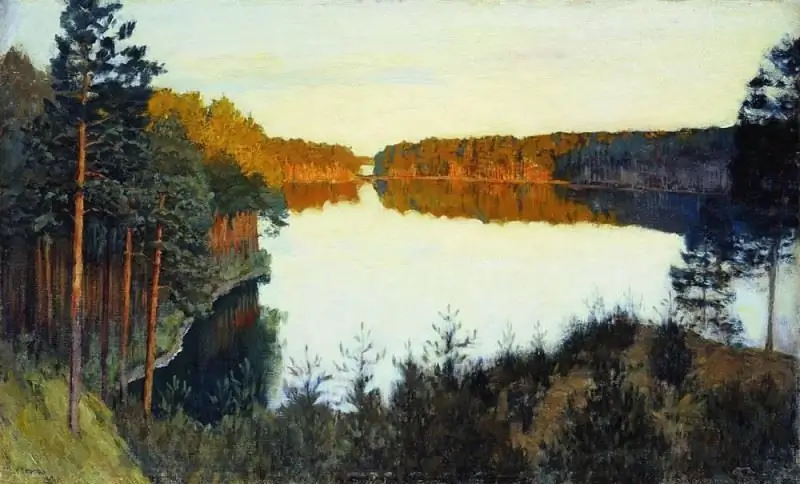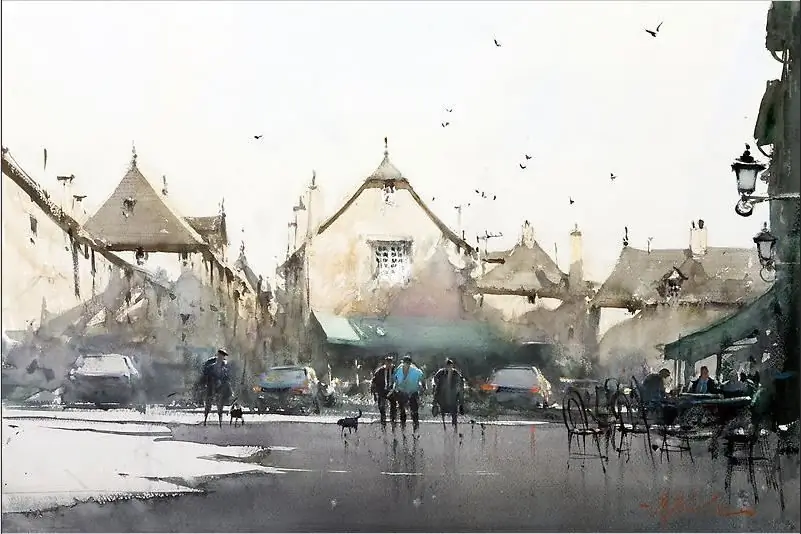2026 Author: Leah Sherlock | [email protected]. Last modified: 2025-01-24 17:46:35
Artist Vernet Claude Joseph was born into a creative family: both his father and his grandfather devoted their lives to painting. Unlike many other representatives of the profession, Claude became famous during his lifetime. His seascapes were warmly received by the Russian Emperor Paul I, and Louis XV commissioned a whole series of canvases dedicated to French seaports. During the life of the author, his paintings adorned palaces throughout Europe, and today they hang in all major museums.
Childhood and youth
The artist Claude Joseph Vernet was born in the French town of Avignon on August 14, 1714. Although the parents were not rich, the boy's father devoted a lot of time to his education, in particular the development of artistic talent. When Claude grew up, he was sent to Italy to study with the best masters of that era. Most of his peers from poor families were forced to wait several years for an academic award in order to pay for their education, but ClaudeVerne was more fortunate than others. His education was paid for by we althy family friends who admired the work of his father and grandfather.
Life in Italy
Thanks to his patrons, Vernet got the opportunity to learn from the greatest masters: Pannini, Manglara, Locatelli. The young man wrote a lot from nature, depicting river banks and seascapes. He devoted nineteen long years to this occupation. During this period of his life, he painted magnificent canvases, which are currently stored in museums: "Villa Ludovisi" - the State Hermitage of St. Petersburg, "Villa Pamphili" - the State Museum of Fine Arts. A. S. Pushkin in Moscow, "Ponte Rotto", "View of the bridge and castle of the Holy Angel" - Paris Louvre.

In the early paintings of the artist Vernet, subtle observation, skillful transmission of light and shadow, excellent realism, atypical for other painters of this era, appeared. Contemporaries preferred a more decorative, embellished depiction of landscapes. Thanks to his extraordinary skill, Claude Joseph became famous in his homeland even before returning from Italy and continued to enjoy unchanged popularity until his death.
Return to Paris
In 1753 the painter Claude Vernet returned to Paris. Here he received the honorary title of academician and, commissioned by the French king Louis XV, created one of his most famous series - the ports of France. Fifteen paintings depicting Marseille, La Rochelle, Toulon and other cities today belong to the Louvre, butare physically located in the Maritime Museum in Paris. At first, while working on paintings, Claude Joseph went to the city where he painted and created delightful sketches from nature, which, unfortunately, have not survived to this day. There is an opinion that all studies (or some of them) are in private collections and are hidden from prying eyes.

Over time, Vernet began to receive such a huge number of orders that there was no time for travel. The famous French writer, philosopher, educator and playwright Denis Diderot, who wrote the book "Salons", spoke about Claude in 1759: "I see a whole series of paintings by Vernet, some of them are drawn from nature, the other part is a figment of the imagination, but each of them is written ardent, inspirational, with extraordinary skill. This author has an amazing lightness."
Style and theme
The favorite theme of the artist Claude Vernet are landscapes and sea views. It was thanks to the skillful depiction of sea storms that the fame of the painter thundered throughout Europe. Artists of that time rarely wrote anything at their own discretion, most of the canvases were created to order. When there were too many customers, Vernet stopped leaving Paris and focused entirely on the imagination. He worked by relying solely on memory, as well as using his own ready-made sketches of individual parts. For some time now, depicting scenes of shipwrecks, the author has been carried away by bright dramatic effects, sacrificing the subtle and unique coloring inherent inearly labors. But Claude Vernet played an important role in the development of European landscape painting and romanticism.

Features of technology
Drawing in oil sketches from life played a key role in the development of painting in the 18th and 19th centuries. Many European artists adopted this style, but still this technique remained typically French. The oil sketch was an independent canvas, later copied onto a larger canvas and supplemented with new details. As a result, the picture turned out to be unusually realistic, lively and dynamic, and the scenes of storms and shipwrecks contained vivid emotion and drama. Even after Vernet began to draw from memory, he retained the unprecedented ease of writing learned in his youth.

The artist Vernet Claude Joseph died on December 3, 1789. His son Antoine and grandson Horace continued the family tradition and also devoted themselves to painting. The artistic dynasty continued to exist, and the creative legacy of Claude Joseph lives on to this day.
Recommended:
Levitan's creativity in his paintings. Biography of the artist, life history and features of the paintings

Almost every person who is fond of art is briefly familiar with the work of Levitan, but not everyone knows about his biography. You will learn about the life of this talented person in the process of reading the article
Joseph Zbukvich: short biography, creativity, work

Watercolor is such a light, simple, at first glance, and comfortable paint. But such a lady is not so easy to deal with as it initially seems. She has a free and naughty character, under which it remains only to masterfully be able to adapt, in which the artist Joseph Zbukvich incredibly succeeded
Claude Lorrain: biography and creativity

The most famous artists who worked in the genre of landscape are Leonardo Da Vinci, Rembrandt Harmenszoon van Rijn, Raphael Santi, Vincent Willem Van Gogh and others. One of the brightest representatives of classical landscape painters is the French artist Claude Lorrain
British painter Joseph Mallord William Turner: biography, creativity

There is not much information about the life of this artist, and many of them are contradictory. It is known that William carefully concealed his life and deliberately distorted the facts of his biography. William Turner - an artist who believed that his work would tell about him best
Monet Claude - biography and creativity

Biography of Claude Monet. The formation of the artist and the beginning of creative activity. Photos of paintings by Claude Monet

